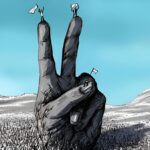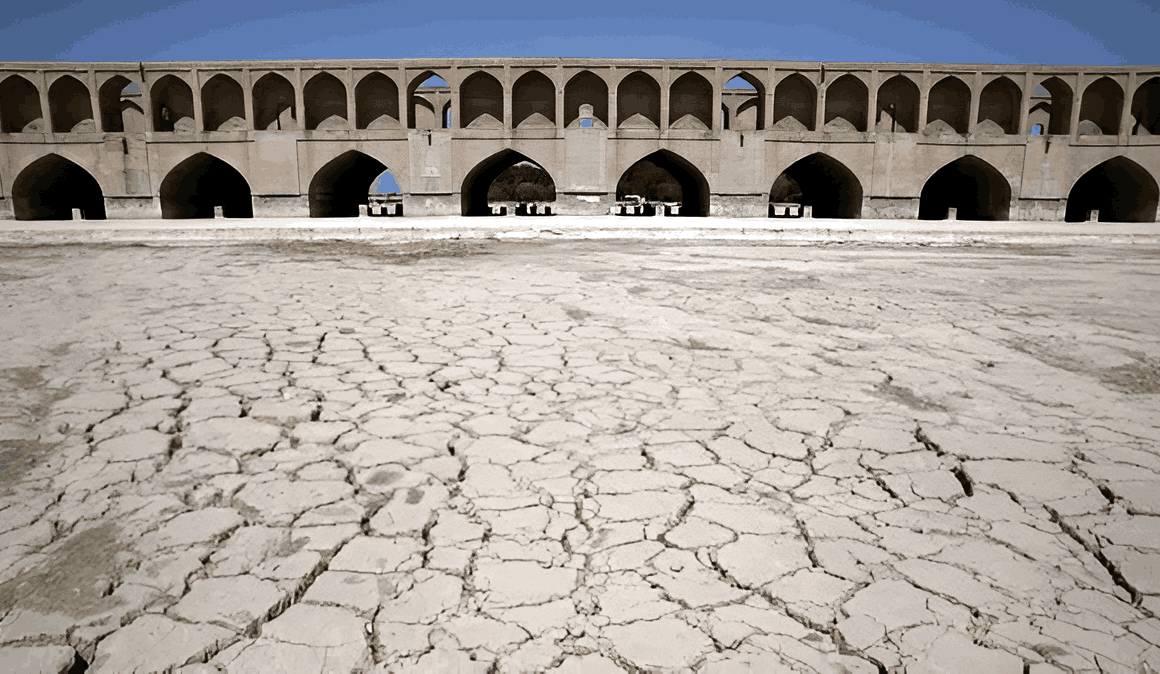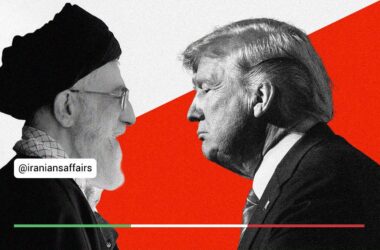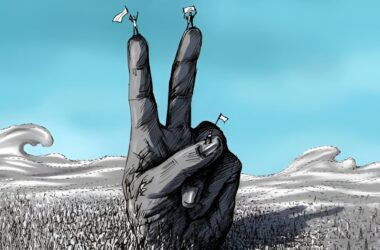There is a simple and well-known law in physics that humans cannot hear sounds above 20,000 hertz. These sounds are called ultrasound. What is currently discernible from Iran are sounds of this kind in the fields of the economy and water. These sounds clearly indicate emergency alarms, but it seems their excessive volume renders them inaudible.
In recent days, amid Iran’s news, three alarming pieces of information were published, each of which alone could predict the unpredictable and even uncontrollable course of this country’s future. However, amidst the wave of news related to domestic suppression and external aggression by the Islamic Republic, these three pieces of news received less attention.
The first piece of news was announced by a former official of the Islamic Republic in an interview: Iran has reached the stage of water bankruptcy. Eisa Kalantari, who served as the Minister of Agriculture in the Hashemi Rafsanjani and Mir-Hossein Mousavi administrations, revealed that Iran’s fossil water reserves are depleted. He disclosed that the Islamic Republic has been extracting water from Iran’s fossil aquifers since the Mir-Hossein Mousavi government, and as the annual extraction exceeded the recharge rate of underground aquifers, Iran is now in a state of water bankruptcy.
As he stated, while Iran’s accumulated fossil water over thousands of years reached over 500 billion cubic meters, of which around 200 billion cubic meters were sweet water and 50 billion cubic meters were brackish water usable in pistachio cultivation and some other crops, the extraction trend began with Mousavi’s government at an annual rate of 250 million cubic meters and reached over 8 billion cubic meters per year by the end of Rouhani’s government. Now, virtually all of Iran’s fossil freshwater reserves have been depleted.
Kalantari predicted Tehran’s daily subsidence by one millimeter and described Iran without water as a land unfit for habitation in the near future. The publication of this news, especially in the Middle East, where in the past decade, Syria and Yemen have entered an era of endless internal conflict due to water shortages and local conflicts, serves as a serious warning for Iran’s very near future. Iran has experienced widespread protests and bloody suppression of protesters three times in the past five years over water issues.
The second piece of news that was published in these days was about changing the retirement age in Iran. As the first generation born after 1979 now approaches retirement age, this news holds significant meaning for the main workforce of the Iranian population. The Islamic Republic has depleted the economic resources of the Social Security Organization, the country’s largest and most comprehensive pension fund, much like the fossil water resources of the country. Now, it lacks sufficient resources even for paying the pensions of current retirees. Therefore, by increasing the retirement age, the government aims to create delays and postpone the collapse of pension funds.
While this new policy may delay the impending collapse, there is also the possibility that, given the increasing trend of shutting down production units and economic enterprises, it could lead to a rise in unemployment insurance applicants and ultimately be unable to prevent an imminent collapse.
What complements these two pieces of news, completing the triangle of biological, welfare, and economic collapse in the Islamic Republic, is another point present in next year’s budget bill for Iran. The Islamic Republic’s government has set its oil revenue for the coming year based on the daily sale of one million and 200 thousand barrels of oil. This is much less than the current estimate of around two million barrels per day. However, the Islamic Republic’s solution to compensate for this deficit and also cover the increasing expenses of the government and its unformed economy is a fifty percent increase in taxes.
In recent years, annual tax increases have been accompanied by protests from various trades and businesses, but it has never turned into a crisis. However, the year we are currently experiencing has been one of the most detrimental for various Iranian businesses. In an attempt to control soaring inflation, the government has implemented unprecedented policies, such as reducing unprecedented loans and suppressing the market through authoritative control of currency prices and the lack of allocation of import currency. The result has been an unprecedented recession in all markets.
The fact that, after such a year, the burden of compensating for the shortfall in oil sales and the burden of increasing current government expenses, engaged in regional wars from Ukraine to Israel, falls on taxpayers, can ignite another wave of bankruptcy, business closures, and create livelihood problems for the unemployed, ultimately leading to a new wave of livelihood protests.
These three crises have crossed the warning threshold and approached the red alert of an explosion. The daily life of the people in Iran shows no sign of understanding the impending disaster. On the political front, there is no talk about this red situation and how to deal with it. The closest image to the current situation in Iran is that of a large and shining iceberg whose foundations have melted in the heart of the ocean, it has suffered multiple fractures, yet its ice layer remains intact, and no one sees its collapse.
The moment the first crack appears in the shell of this iceberg, the horrifying sound of its collapse and the disintegration of the iceberg within itself will unleash powerful waves that will impact the coexistence of the people of Iran and all the countries reached by these waves for a long time. It seems unlikely that this iceberg can survive more than the next five years.

